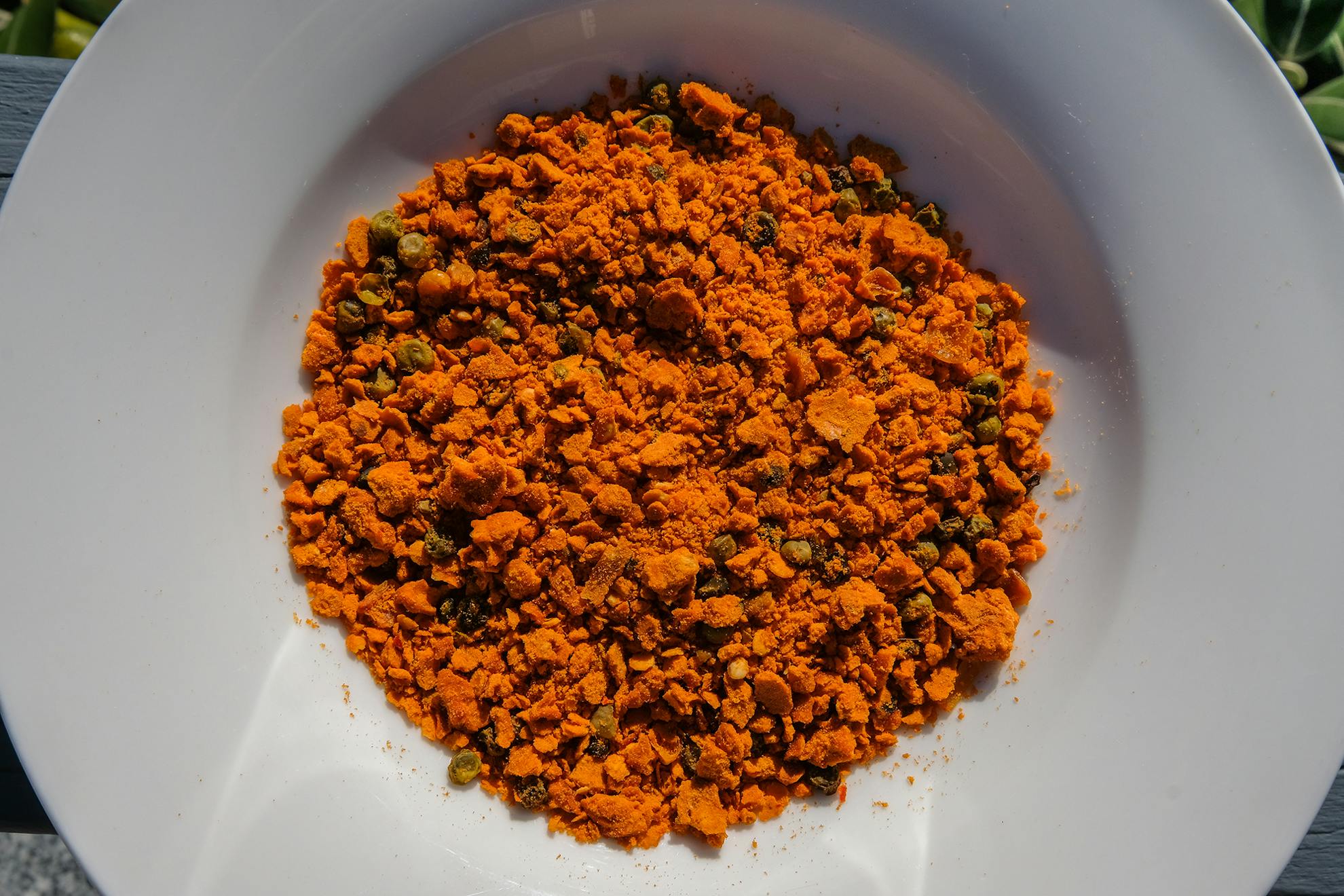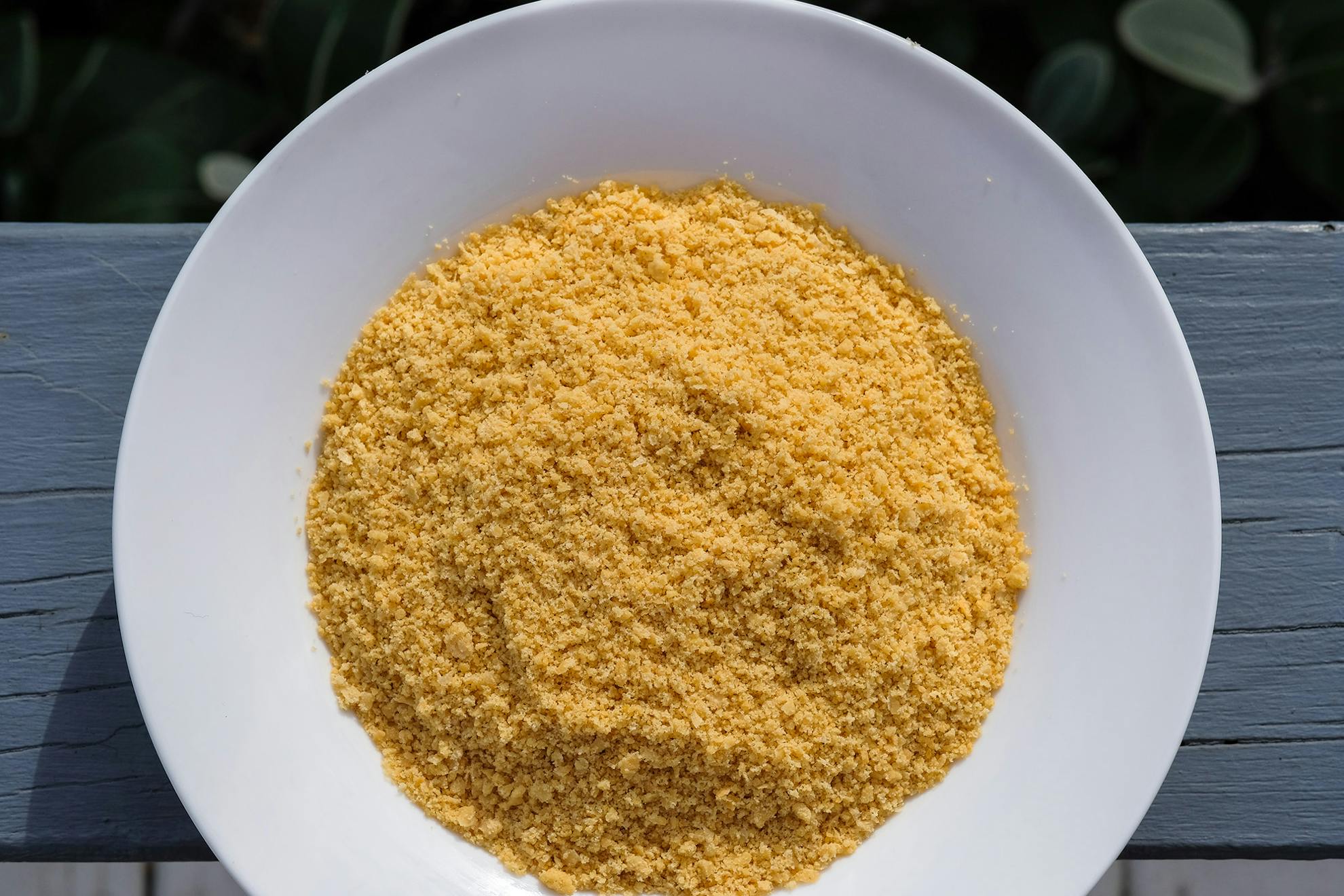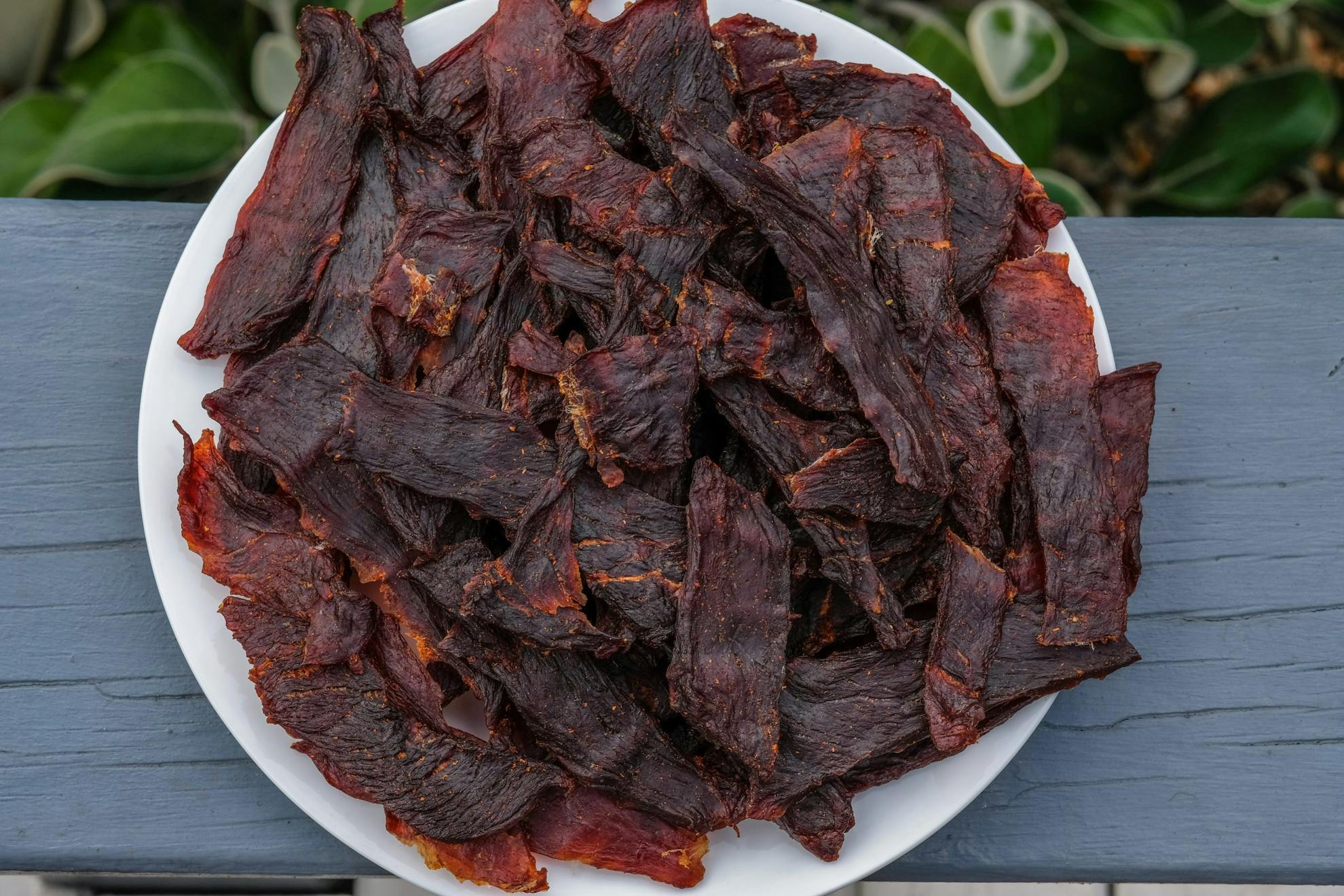Jo Stilwell has been experimenting with home dehydrated meals for years. Here, she passes on some of the lessons learnt.
My mother gave me a dehydrator nearly 30 years ago. At the time, I played around with it sporadically, mainly dehydrating fruit and vegetables, but didn’t really get into dehydrating a wider variety of meals and food until we had kids and I wanted to reduce our pack weights.
The first evening meal I attempted was a beef mince dinner, which we all agreed looked and tasted like dog food. We buried it under a tussock bush and the kids ate crackers, cheese and chocolate for dinner.
Clearly I’d done something wrong, but over the years I perfected a few easy recipes, experimented with different foods and now I dehydrate a lot of the food I take tramping.
Dehydrating for me is not an exact science. I’m pretty slap-happy. My dehydrator doesn’t have a temperature gauge or timer, and the trays I use for wet food I made 20 years ago from plastic pot plant saucers (cut a hole out of the middle and cut them down to size).
I often don’t use recipes, I don’t use gourmet ingredients or make things from scratch. Curry pastes, tinned pasta sauces and ginger and garlic from jars are my friends. Food tastes so darn good after a long day tramping that I’m pretty sure my taste buds can’t tell if the garlic in my dehy was freshly crushed or came from a jar.
Dehydrating food can be done in a conventional oven. I have never tried this but the principles are the same and the trick seems to be in getting the temperature low enough. Most foods seem to be dehydrated at around 50-60℃ .
How to work out serving sizes
Once food has been dehydrated, it’s quite difficult to know what a serving size is, so I always weigh the wet mixture after I’ve cooked it. Then I weigh out what I think to be an approximate serving size, keeping in mind that I love my food and I eat a lot. Total weight, divided by weight of one serving, equals the amount of serves. After I’ve finished dehydrating, I’ll then re-weigh the dried mixture and divide this into the number of servings I originally calculated. I find this process to be the most accurate.
Drying times
I never know in advance how long something will take to dehydrate. Drying times depend on the temperature of the dehydrator, the thickness and moisture content of the food, and the climate in which the dehydrator is running. I check the dehydrator every so often and it’s not hard to tell when the food is dry enough. Sometimes there are moist bits that haven’t dried as well as the rest of the tray. Usually this is because I haven’t been careful enough to spread the mixture evenly. If most of the tray is adequately dried, I’ll collect the moist bits and dehydrate those a little longer – like I said, it’s not an exact science.
Lessons learned
During my years of dehydrating my own food, I have learned a few things.
- Rotate the trays every couple of hours to ensure even dehydrating.
- Spread wet foods thinly and evenly.
- No matter how small I cut it, I’ve never had success with rehydrating chicken breast. Shredded chicken (in water from a tin) works well in curries as does chicken mince.
- Dehy smoked fish needs to be double bagged in your tramping pack.
- Run the dehydrator in the garage, or outside, to prevent the whole house smelling of beef jerky.
- While tramping I never bother measuring out the water I add (although for most of my dinners it seems to be about ¾–1 cup per serve). If it looks a bit thick after sitting for a while, I add a bit more water and if I’ve added too much at the beginning I call it soup. It can also be thickened with dried spud, coconut cream powder or instant cheese sauce mix.
- I divide the dehydrated food into two-person servings and bag it into plastic ziplock bags that I wash and reuse until they develop holes.
- Store dehydrated food in a dark, cool and dry place. I store all mine in the freezer so it will last for months while also ensuring food with a higher fat or oil content won’t go rancid.
- I always carry a foil pouch from a previously-purchased commercial dehy meal and use this for rehydrating. It seems to work more efficiently than a billy or a plate and can be put inside my jacket or sleeping bag to act as a hot water bottle while I wait.
Recipes
Here are a few things I regularly dehydrate, and some advice on how to prepare them while tramping.
Beef mince sauce
This is a very basic rich tomato and herb flavoured meat sauce to add to pasta, rice or dried spuds. There are no veggies in this recipe but spinach, corn kernels,peas, chopped beans or capsicum could all be added, or take separate veg to add to the meal.
Ingredients
- 1 large onion finely chopped
- 2 cloves garlic crushed (or 2 tsp from a jar)
- 1 tbsp oil
- 700g beef mince (any grade of mince will do, but the less fat the better when dehydrating – I use prime or premium grade)
- 1 cup tomato paste
- 1 tsp salt
- 3 tbsp mixed herbs
- 1 cup water
Profile
Cooked wet weight: 1240g – 6 serves, 200g per serve
Dried weight: 370g – 6 serves, per serve
Method
Cook onion and garlic in oil until translucent, add mince and brown.
Add everything else and cook until as much moisture as possible has been absorbed.
Spread on trays and dehydrate for about 8hr.
In the field
Rehydrate in a foil pouch. Add about ¾ cup boiling water and let sit for as long as possible. I have this with parmesan cheese or instant cheese sauce, mixed either in my cup with boiling water, or stirred straight into the pouch if the mixture is too sloppy and requires thickening.

Red Lentil curry
An easy to make vegan-friendly curry that is delicious with coconut cream powder added.
Ingredients
- 2 onions finely chopped
- 1 tbsp grated ginger
- 3 cloves garlic (or 3tsp from a jar)
- 2-3 chopped kaffir lime leaves (if you have them)
- 3 tbsp red curry paste
- 1 tbsp oil
Cook all together for a few minutes then add:
- 2 cups red lentils
- 3 cups frozen peas and corn 410g tin of tomato paste
- 6 cups water
- 1 tsp salt
Profile
Cooked wet weight: 1900g – 7 serves/270g per serve (sounds big but this is a very wet mixture)
Dried weight: 500g – 7 serves/70g per serve
Method
Bring to the boil, lower heat and cook until water has been absorbed and mixture thickens, stirring occasionally then more frequently toward the end.
Spread on trays and dehydrate for around 6-8hr.
In the field
Rehydrate in a foil pouch with a couple of large spoons of coconut cream powder and approximately one cup of boiling water per serve. I usually have this with dehy spud and add a few almonds to the top.

Hummus
This is one of my absolute favourite things to have when tramping. You can make your own, but usually I buy it ready-made. Spread evenly on trays and dehydrate until dry and crumbly (approximately 4-6hr). This can be ground to a very fine powder in a food processor but I never bother with this step.
A 500g container of hummus yields 185g of dried hummus equating to 6 x 30g serves.
I rehydrate it in my cup at lunchtime and it doesn’t require any waiting time. Just add cold water, a little at a time, until you have the consistency you like. Hummus is perfect for lunches towards the end of a tramp when the butter or cheese has run out. It can also be served for a main meal with rice and vegetables (but you would probably want to increase the serving size).

Beef jerky
This is another lunchtime favourite. I’ve only ever used beef schnitzel but other cuts could be experimented with.
Marinade ingredients
- ¼ cup soy sauce
- ½ tsp garlic salt
- 2 tbsp brown sugar
- 1 tsp smoked paprika.
Method
Buy 600g of schnitzel and trim off any visible excess fat, and cut into strips.
For the marinade for 600g schnitzel, I use approximately ¼ cup soy sauce, ½ tsp garlic salt, 2 tbsp brown sugar and 1 tsp smoked paprika.
Marinate for an hour or overnightif you have the time.
Lay on trays and dehydrate for about 6-10hr, depending on how dry or chewy you like your jerky.
600g of beef schnitzel yields 250g dried jerky equating to 5 x 50g serves.
Tinned Fish
Any fish tinned in spring water can be easily dehydrated. Drain water well and flake fish finely before spreading onto trays to dehydrate for 4-6hr. A 450g tin of smoked fish fillets dehydrates to just 85g. I usually rehydrate this in a billy, adding dried veges and boiling water. When veges and fish are soft, I’ll throw in more water, dried dill, mustard powder, an instant cheese sauce mix and have it with pasta or dried spud.
Successes in dehy
Not every meal works well, but here are a few of the successes I’ve had.
- The vegetables I’ve had the most success dehydrating are corn kernels, peas, beans, spinach and peppers.
- Edamame soy beans dehydrate well (2 cups, or 300g, dehydrates down to 90g) but they take a while to rehydrate so I’ll often cook them in the billy for a few minutes first to get them started. I make a miso, vegetable, rice, and dried seaweed dish with them.
- I like to dehydrate natural yoghurt (it goes a brownish colour) to flake up and add to Indian-style curries.
- Soups where the mixture is blended after cooking dehydrate well. A couple of favourites are pumpkin, sweet chilli and coconut cream, and curried kumara. After dehydrating, blitz in a whiz to a fine powder. They make a great wintertime lunch (can be mixed straight into your cup) or as a pre-dinner snack.
- Dehydrating cooked rice (brown and white), pasta and noodles doesn’t reduce their weight because they are already dried, but it does make them cook faster, thereby saving weight on fuel. Pasta will rehydrate by just sitting in a billy of boiling water (risoni is best) but brown rice needs a few minutes of cooking first.








